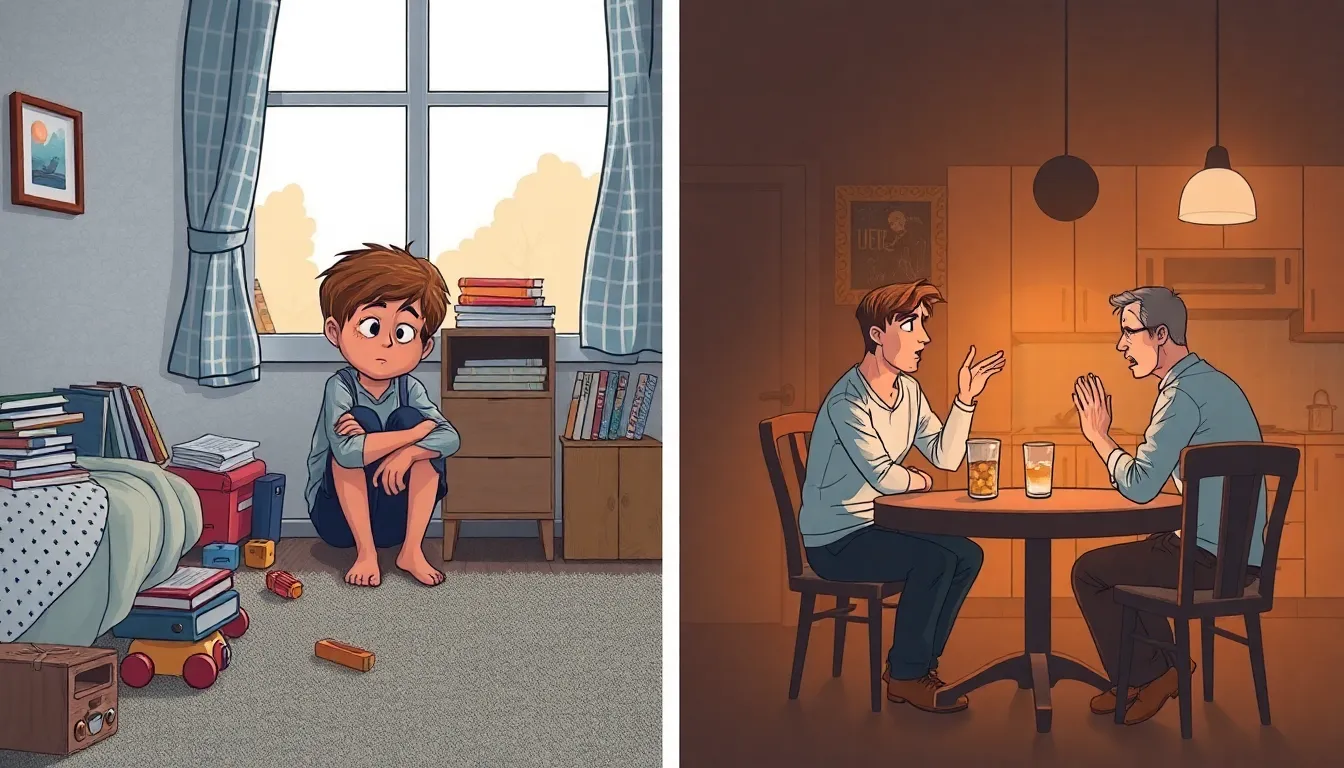Family gatherings can be a mixed bag, especially when alcohol enters the equation. Picture this: Uncle Bob’s storytelling skills go from charming to cringe-worthy after a few too many drinks, while Aunt Linda’s dance moves take a turn for the questionable. Alcoholic family dynamics aren’t just about the drinks; they’re a complex web of relationships, emotions, and sometimes, chaos.
Understanding how alcohol shapes these dynamics can be eye-opening. It’s not just about the bottle; it’s about the bonds that can either strengthen or unravel under its influence. Whether it’s the awkward silence after a drunken outburst or the unexpected laughter that follows a hilarious mishap, navigating these family interactions can feel like walking a tightrope. Dive into the world of alcoholic family dynamics and discover the hidden truths that lie beneath the surface.
alcoholic family dynamics
Alcohol shapes interactions within families, creating unique dynamics that impact relationships and emotional health. Recognizing these influences is crucial for understanding family systems affected by alcoholism.
The Role of Alcoholism in Family Systems
Alcoholism often serves as a central force in family dynamics, altering roles and behaviors. Family members may adopt specific positions, such as the enabler or the scapegoat, to cope with the chaos that alcohol brings. Communication typically becomes strained, with misunderstandings flourishing in an environment fueled by excessive drinking. Emotional responses may intensify, manifesting as resentment, guilt, or fear. The cycle of addiction impacts not just the individual, but also the entire family system, prompting patterns that may continue for generations.
Patterns of Behavior in Alcoholic Families
Certain behaviors emerge consistently within alcoholic families, shaping interactions and expectations. Family members often internalize feelings, leading to patterns of secrecy and denial. Frequent disruptions in daily life may occur, affecting everything from meals to celebrations. Children in these families might assume caretaker responsibilities, prioritizing the needs of the alcoholic over their own. Conflicts frequently escalate, often resulting in volatile environments that leave lasting emotional scars. Understanding these patterns provides insight into the broader impact of alcoholism on family dynamics.
Impact on Family Members


Alcohol significantly affects family members, creating complex emotional landscapes. The consequences ripple through relationships, altering how individuals interact within the family unit.
Emotional Consequences for Children
Children in alcoholic families often experience anxiety, confusion, and fear. Many feel responsible for the adult’s behavior, internalizing guilt and shame. These emotions impact their ability to form healthy relationships later in life. They may struggle with trust issues, leading to isolation or withdrawal from peers. Additionally, they frequently adopt caretaker roles, placing undue pressure on themselves. Academic performance often declines due to the emotional turmoil, perpetuating a cycle of stress and instability.
Effects on Spousal Relationships
Spouses of individuals with alcohol use disorder face unique challenges. Trust erodes quickly as dishonesty about drinking becomes commonplace. Communication deteriorates, leaving feelings of resentment and frustration. Emotional support often shifts from supportive partnerships to enabling behaviors. Many couples enter a cycle of conflict, with arguments arising from misunderstandings. Over time, intimacy decreases, creating a chasm between partners. Spouses may experience depression or anxiety, feeling trapped in the chaos caused by alcohol. The toll on relationships can cause long-term psychological impacts, affecting future partnerships.
Coping Mechanisms within Alcoholic Families
Coping mechanisms in alcoholic families vary significantly, affecting dynamics and relationships. Recognizing effective strategies helps in navigating challenging environments.
Healthy vs. Unhealthy Coping Strategies
Healthy coping strategies promote stability and understanding among family members. Examples include open communication, setting boundaries, and seeking professional help. These approaches foster emotional support and resilience, creating safe spaces for family discussions. Unhealthy strategies, however, often involve avoidance, blame, and denial. Secrets may perpetuate tensions, leading to resentment and emotional distance. While children may assume caretaking roles, adults might enable destructive behaviors. The duality of these coping strategies influences long-term family health and individual well-being.
The Role of Support Networks
Support networks act as crucial lifelines in alcoholic family dynamics. Friends and extended family members provide essential emotional support and practical assistance. Involving local support groups or therapy enhances understanding and coping skills. External connections reduce isolation, fostering a sense of community among those affected. Participants often share experiences and strategies, promoting healing. Through these networks, individuals can learn to establish healthier relationships and break the cycle of addiction. Constructive interactions within support systems strengthen resilience among family members, encouraging recovery and growth.
Seeking Help and Recovery
Addressing the complexities of alcoholism within family dynamics often requires external intervention. Many families benefit from professional guidance to navigate these challenging situations.
Professional Interventions
Counseling and therapy play a crucial role in recovery. Licensed therapists with expertise in addiction help families understand their dynamics and develop healthier communication patterns. Techniques such as family therapy enable members to express feelings and confront underlying issues. Intervention specialists may also facilitate discussions, encouraging individuals to acknowledge their alcohol use disorder. These professionals create a safe space for families to address pain and find constructive ways to cope together.
Support Groups and Therapy Options
Support groups provide vital resources for families facing alcoholism. Organizations like Al-Anon offer a supportive community where individuals can share experiences and strategies. Attending regular meetings fosters a sense of belonging and understanding among participants. Therapy options, including group sessions, enhance emotional support and aid in healing. Engaging with peers who understand similar struggles helps families feel less isolated. Overall, these resources empower families to regain control of their lives and foster healthier relationships.
Conclusion
Navigating alcoholic family dynamics is a complex journey that requires awareness and understanding. The emotional toll on family members can be profound with lasting effects on relationships and individual well-being. Recognizing unhealthy patterns and seeking support can pave the way for healing and healthier interactions.
By fostering open communication and setting boundaries, families can begin to break free from the cycle of addiction. Professional help and support networks are vital in this process, offering tools and strategies for recovery. Ultimately, the path to healthier family dynamics lies in mutual support and a commitment to change.



